Winners of Eleven's “Tenderloin System Update” envision new forms of urban revival
By Justine Testado|
Tuesday, Jul 19, 2016

Related
San Francisco has become a poster child for gentrification, a controversial topic wherein multiple aspects of contemporary urban living simultaneously play a role. While particular sections of San Francisco are ridden with affluence, there are areas that still suffer from high rates of crime and poverty. Eleven Magazine wanted to highlight this widespread issue in the context of SF's Tenderloin district for their second annual architecture competition, “Tenderloin System Upgrade”.
In the most utopian of societies, there would be a one-size-fits-all solution that can solve such a glaring disparity once and for all. But pragmatism was key in winning the jury's favor. In the brief, Eleven Magazine posed debatable questions such as: “Can the Tenderloin be transformed into a model district to inspire a new 21st-century inner-city regeneration model that steers away from Gentrification? Can technology play a key role? How can we imagine a new form of Regeneration which engages with the local community and context rather than overshadow them?”
The competition concluded with one prize winner, a runner-up, a People's Choice, and honorable mentions.
Check out the winning entries below.
WINNER: "The Tender Track” by ASPECT Studio – Louise Pearson (Australia), Yiran Li (Australia), Matthew Drury (Australia) and Thea Harris (Australia)
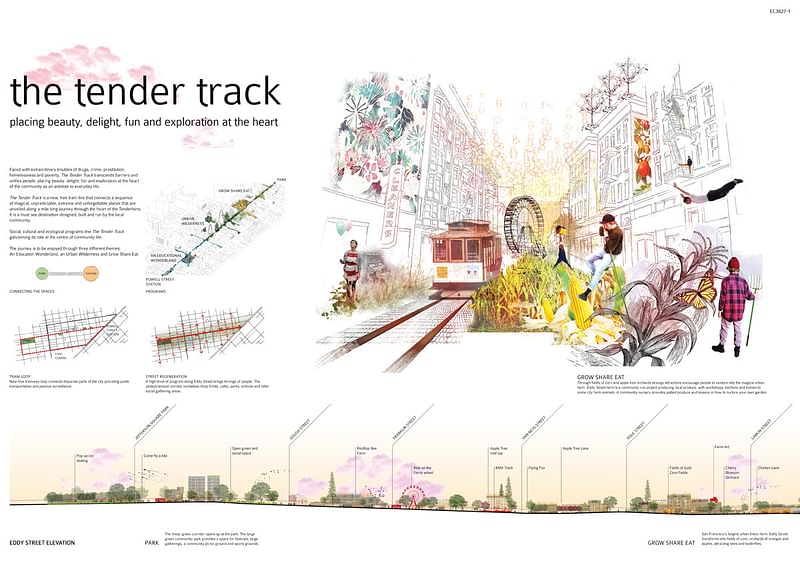
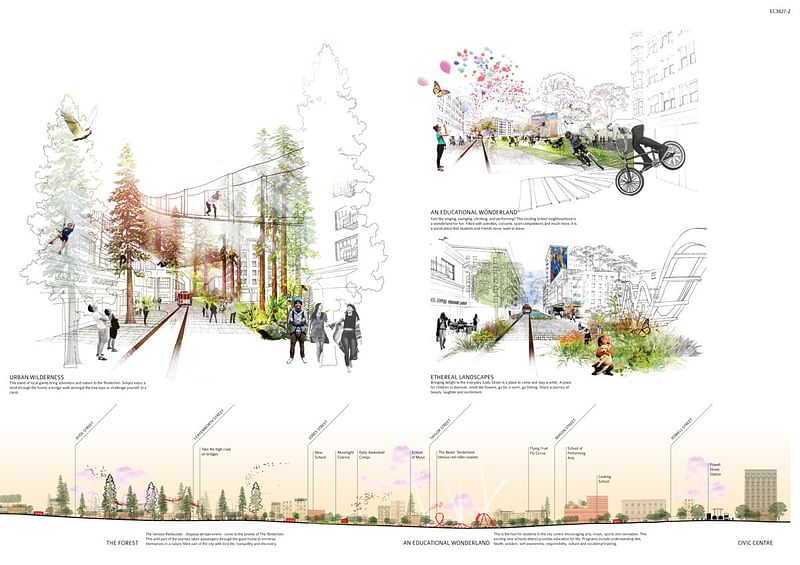
Project summary: “Described by the design team as ‘an antidote to everyday life’, the Tender Track proposes a sensitive and beautiful regenerative approach to the problems of crime, homelessness and poverty affecting the Tenderloin today. The proposal suggests a new mile-long free tram line for the heart of the Tenderloin, which connects a sequence of unique spaces together, each built and run by an empowered local community. The journey has three primary themes: Education Wonderland, Urban Wilderness and Grow Share Eat. The jury loved this proposal from concept to presentation and particularly liked how the design team managed to weave together such an ambitious design in a coherent, contextual, innovative and yet feasible manner.”
RUNNER UP: “Urban Playground” by Charlotte Durand-Rival (France), Chloe Durrieu (France), Simon Forget (France) and Emmanuel Chesné (France)


Project summary: “Described as a ‘resuscitation’ by the design team, ‘Urban Playground’ is about channeling the Tenderloin’s individual identity as a key to its own regeneration. It is an update, not an upgrade. ‘We have imagined a scenario that combines technology, energy and a way of life’, explain the design team, ‘a return to basic needs with firm modern ways.’ The proposal suggests three primary routes through the Tenderloin, each dotted with new public spaces and pieces of architecture which serve to reinforce several themes running throughout the design. The proposal engages with the Tenderloin at multiple scales – city, neighborhood, block – and in doing so, successfully manages to create a comprehensive strategy for the self-revitalization of the Tenderloin with the city of San Francisco. The jury particularly liked how the team reimagined a regenerated Tenderloin through a re -invigoration of this neighborhood’ s existing cultural identity.”
PEOPLE'S CHOICE: “Art-Identity-Technology” by PT Group Architects (Italy)


Project summary: “[Voted by the general public as their favorite entry,] ‘Tenderloin is a district with an artistic vocation since its origin’, explained the architect, ‘with many areas dedicated to various spontaneous forms of art, including murals’. This artistic vibe was the inspiration for the design. Merging arts with technology, the design team’s proposal in to turn the Tenderloin into a living hologram park. People would be encouraged to venture into the Tenderloin and enter an art-adventure-discovery-trail. Through the neighborhood – with the help of augmented reality – visitors will be able to discover hologram hotspots and watch holograms come to life! ‘Art and technology, considered synonyms, act in symbiosis to simulate urban realities, social, historical reconstructions etc.’, say the design team, ‘so, the imagination is part of everyday life’. Eleven loved the idea of merging art and technology together and using it as a way for people to interact in a notoriously cut-off area. This project shows how art and technology can act as 21st-century stimuli for urban interactions.”
All images courtesy of Eleven Magazine.
Don't forget to check out the honorable mentions in the image gallery below!









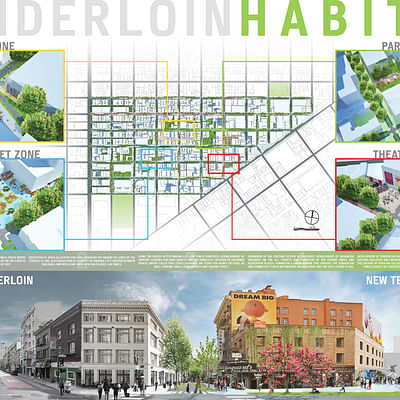
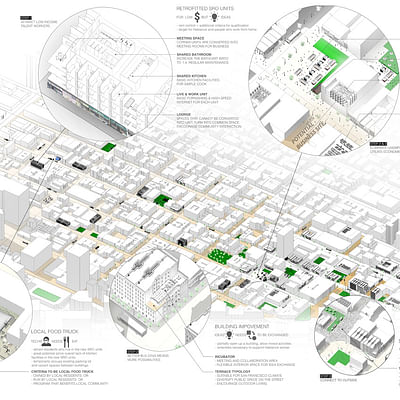
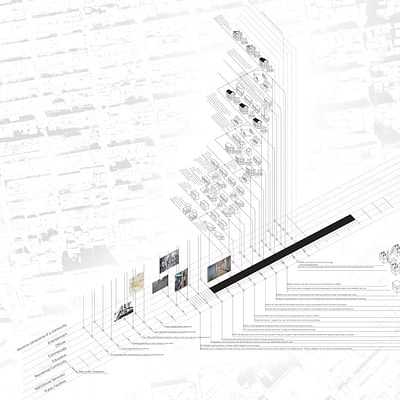

Share
0 Comments
Comment as :